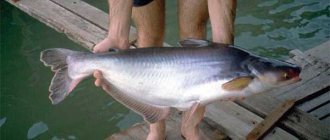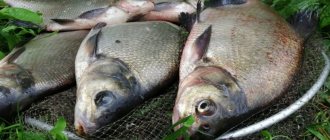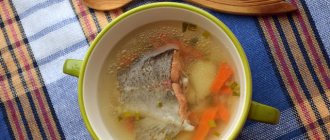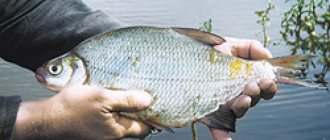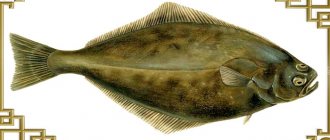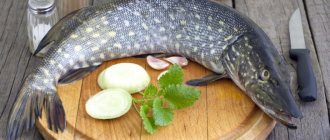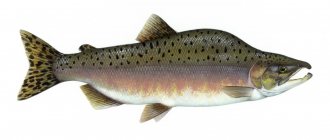What are the benefits of haddock?
- General . It has many useful properties. For example, it is actively involved in protein production, strengthens bones and teeth and improves immunity. In addition, haddock is a preventative against cancer. It also strengthens the circulatory system, improves vision and accelerates the healing process of skin wounds. Regular consumption of haddock improves the functioning of the nervous system and heart.
- For women . Haddock protein is very easily absorbed by the human body, so haddock fillet is perfect for dietary nutrition. In addition, this fish helps improve metabolism and slows down the aging process in the body. It is known that many women face a lack of hemoglobin - haddock helps to cope with this problem. During pregnancy, fish will saturate the body with vitamins and minerals, which are necessary during this difficult period for both the expectant mother and the unborn child. And during lactation it will be an excellent source of iodine for the child.
- For men . For the stronger sex, haddock will also not be useless. Statistics show that men are more likely to suffer from heart disease, so eating fish will help control blood cholesterol levels and improve blood circulation. In addition, this fish contains very little fat and a lot of protein, which will appeal to athletes.
- For children . Fish can be included in a child’s diet only after he reaches the age of three and only after consultation with a pediatrician, who will prescribe the dose. Haddock will help in bone development and strengthen children's immunity. Doctors recommend giving your child fish oil in tablet form. With regular consumption of this fish, the need for fish oil will disappear.
- When losing weight . Haddock is low-calorie, low-fat, but at the same time it contains a lot of protein, which allows it to be used in the diet of people losing weight. As a dietary product, it reduces cholesterol in the blood and strengthens the cardiovascular system. Fish should only be used as part of some kind of diet, since it alone cannot provide the body with everything it needs to exist.
Nutritional value and cost of haddock and cod
Cod and haddock are popular commercial fish species. They belong to the cod family and are presented on the shelves of modern fish stores and supermarkets in chilled, frozen, salted and pickled form.
Compared to cod, haddock has a more delicate texture and a richer chemical composition. This is why haddock is much more highly valued and has a higher price. To find out how much both of these types cost, you need to study the prices at the market or in a store. In different regions and on different trading platforms, prices for fish can vary significantly.
Often, unscrupulous sellers try to sell cod under the guise of haddock. This allows them to sell goods at a higher cost.
To avoid falling for the tricks of dishonest sellers or manufacturers who incorrectly label their products, you should give preference to uncut fresh or frozen fish. If the fish is cut into pieces or fillets without skin, it can be very difficult to determine whether the product belongs to any particular species.
It is advisable not to buy minced fish in the store, since in this case manufacturers very often replace haddock meat with meat from even cheaper representatives of the cod family. As a rule, fish such as blue whiting are used for these purposes, which in some countries is considered a food species, as it has low nutritional value.
What are the benefits of cod?
- Disease prevention . Cod reduces the risk of developing certain diseases. For example, due to its low fat content, it removes cholesterol from the body and strengthens the heart, which prevents heart attacks, high cholesterol, thrombosis, and leukemia. Eating fish also reduces the risk of strokes, atherosclerosis, pulmonary embolism, cancer and myeloma.
- For the cardiovascular system . It has already been said that eating fish has a beneficial effect on the cardiovascular system. The omega-3 it contains improves heart rate. Studies in people taking fish oil (an omega-3 fatty acid) have shown improvements in heart function after just two weeks.
- Cleansing the body . The phosphorus contained in cod fillets is very important for kidney health. It has a diuretic effect, which is followed by cleansing of the kidneys. Thanks to regular consumption of cod, the water-salt balance in the body is normalized, and accumulated waste and toxins are eliminated.
- For digestion . Since eating cod helps cleanse the body, it helps digestion even more so. Phosphorus plays an important role in improving digestion, while niacin and riboflavin improve metabolism, which is necessary for the human body. Thanks to these three substances, diarrhea, constipation and stomach upsets do not occur. So, in order to have healthy digestion, and the entire body as a whole, you need to eat cod regularly.
- For appearance . Protein plays an important role in proper muscle function, so cod is an essential food for muscle health. But besides muscles, there is something else that is important to many people. For example, the health of their hair, skin and nails. Fish also helps with this, because it contains collagen and a lot of protein, which maintain the health of such important parts of the human body. But in addition to external data, cod also retains its internal content. For example, this applies to bones. Due to the high phosphorus content in fish, bone health is greatly improved.
Composition, benefits and taste
It is difficult to talk about which is healthier when we are talking about representatives of the same family, similar in appearance and living in the same environment, and in order to understand what is better, cod or haddock, you will have to get to know them, as they say, “under a microscope.” You should start with the content of healthy polyunsaturated fatty acids (Omega 3 and Omega 6), and in terms of their content, these representatives of cod are not much inferior to some salmon.
The vitamin complex is also rich, and these are essential B vitamins, retinol, ascorbic acid, vitamins D, E, PP and many others. The mineral composition is also rich in both representatives of the family, with haddock being the clear favorite in terms of iodine content, which is necessary for the proper functioning of the thyroid gland. As for the calorie content, for both fish it is around 70 kilocalories per 100 grams of product, and it is difficult to say which is tastier, because it all depends on the method of preparation and your culinary skills. It is believed that cod is more finicky and therefore there are fewer recipes for its preparation than its competitor, which is good in any form and with any sauce.
Contraindications
First of all, contraindications are related to allergies to seafood or individual intolerance to these products. Intolerance is quite rare, but it is always better to educate yourself about your health than to eat something you may be allergic to. Such careless handling of fish can end badly. Both cod and haddock are large predators that can accumulate heavy metals, including mercury. Doctors recommend eating no more than 200 grams of fish per week to avoid possible problems.
What kind of fish
Haddock is a fish of the cod family.
It lives in the salty waters of the Arctic and Atlantic oceans. This is not a river, but a marine representative of aquatic fauna. The largest numbers are observed in the North, Barents and Norwegian Seas. There is information that it can also be found in the Black Sea, but scientists say it is a representative of the genus of whiting. Haddock has an elongated silver body with a black stripe and dark spots along the body. The British call it St. Peter's fish, whose fingerprints are left on its sides.
Lives in a school, feeds on crustaceans, worms, and mollusks. Mature individuals have a length of 50-75 cm, an average weight of 2-3 kg. It is curious that the rate of maturation is affected by the habitat; for example, in the North Sea, fish grow twice as fast as in the Barents Sea.
Spawning lasts from April to June. The instinct of reproduction encourages the fish to migrate to the warmer waters of the Norwegian Sea to the shores of the Lofoten Islands. One female lays from 170 thousand to 1.84 million eggs, but only a few of them will survive.
Despite the fact that haddock has been given the status of a protected species by the International Union for the Conservation of Animals, people continue to catch it en masse.
Features of use for diseases
Haddock is a good source of nutrients for various diseases. The main thing is to prepare it correctly and eat it no more than 2-3 times a week.
- If you have coronary heart disease, you can eat haddock boiled and baked without fat. Sometimes you can add a small amount of coconut, corn, or flaxseed oil to it. Preference should be given to fillets; caviar should be limited.
- For pancreatitis, doctors recommend boiling, steaming in the form of a whole piece or cutlets. Fish soup is contraindicated as it contains extractive substances that irritate the gastrointestinal tract. Fried, smoked, and canned fish are prohibited for patients with pancreatitis.
- According to the glycemic index and calorie content, it is suitable for nutrition for type 1 and type 2 diabetes mellitus. Preference is given to boiled, stewed fish, as well as cooked in the oven or slow cooker. This product allows you to avoid surges in blood glucose and saturate the body with useful substances.
Smoked and dried haddock
Fish in this form is rarely found on store shelves. It is low-fat, so after smoking or drying it becomes quite dry. But this is a matter of taste!
This is how they smoke dried haddock in Scotland
It should be remembered that smoked and dried salted fish are not allowed for people with pathologies of the digestive tract, urinary and cardiovascular systems.
For children
Haddock is a low-fat fish, so it is useful for children of any age. It is with this that you can start fish feeding for infants from 9-10 months.
- promotes normal growth and development;
- strengthens immune defense;
- improves hand-eye coordination;
- supports intellectual processes - memory, attention, thinking and imagination;
- helps normalize sleep and wakefulness phases;
- strengthens bones and teeth, which is especially useful during growth spurts.
According to research, the body’s digestibility of protein from haddock and other fish is 93-98%, meat protein is 88%, so it is easier for a child to digest it.
Recommendations from nutritionists for losing weight
In the absence of contraindications, nutritionists advise including seafood in the diet of a person losing weight. In this case, the beneficial low-calorie properties identified in haddock allow us to recommend it as a dietary product.
The calorie content of this fish varies from 87 to 230 kcal per 100 grams of fillet. For those who want to lose weight, it is best to cook and bake haddock without oil. And adding fiber in the form of a vegetable salad will make the diet balanced according to KBJU.
Beneficial properties for the human body
- Enriches the body with proteins, fats, vitamins and microelements.
- Product for a balanced diet.
- Reduces bad cholesterol levels.
- Activates mental processes.
- Positively affects mental state.
- Improves the functioning of the cardiovascular system.
- Natural source of vitamin D.
- Reduces the risk of developing diabetes, rheumatoid arthritis, multiple sclerosis.
- Supports visual acuity.
- Helps you look younger.



